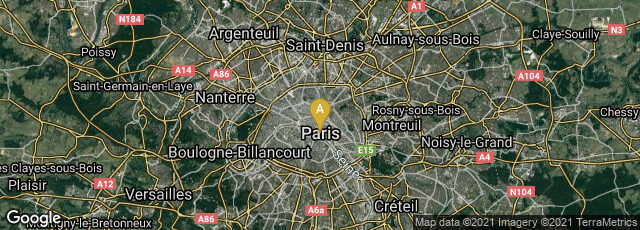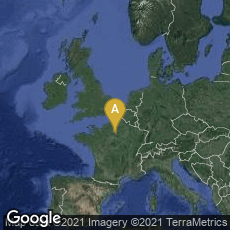

A: Paris, Île-de-France, France
In 1805 naturalist, explorer and polymath Friedrich Wilhelm Heinrich Alexander von Humboldt and botanist and explorer Aimé J. A. Bonpland published in Paris Essai sur la géographie des plantes; accompagné d'un tableau physique des régions équinoxales [Vol. I of Voyage aux régions êquinoxales du nouveau continent]. In this contribution to ecology Humboldt and Bonpland founded the study of the geographical distribution of plants. In 1799 Humboldt and Bonpland embarked on a six-year tour of research through South America and Mexico, a trip which would afterwards be called, justifiably, "the scientific discovery of America." The two amassed exhaustive data in a wide array of fields from meteorology to ethnography, and gathered 60,000 plant specimens, 6,300 of which had been hitherto unknown in Europe. Their American travel journals— issued under the general title Voyage aux régions équinoxiales du nouveau continent, fait en 1700, 1800, 1801, 1802, 1803 et 1804— were published in thirty-four volumes between 1807 and 1834; the sheets of the present work were reissued as Vol. I of the Voyage, with an extra half-title and general title and the plate colored. [We have also seen a copy with the plate uncolored.] Humboldt classified these volumes into six subject groups, of which this volume on plant geography constituted the whole of the fifth. It contains some very interesting ideas on the relation between natural classification of plants and their geographical distribution, as well as one of the earliest attempts to describe the distribution of plants by characterizing geographical-ecological plant associations.
Hook & Norman , The Haskell F. Norman Library of Science and Medicine (1991) no. 1111.